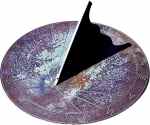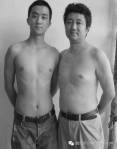
Living on a planet that rotates and orbits, we respond to cycles of time.
Part of this is cosmic, where light, temperature, and weather are affected by the changing relation of our place on Earth to the Sun.
Part is biologic, where circadian and seasonal responses can affect our attention and moods.
And part is cultural or personal as, in varying ways, we may use rituals to mark recurring points in time.
As is examined in links below,
 We may observe recurring holidays, birthdays, anniversaries, reunions, and times of reflection, feast, celebration, or rest.
We may observe recurring holidays, birthdays, anniversaries, reunions, and times of reflection, feast, celebration, or rest.
We may note qualities that are distinctive at particular times and mark transitions from one time to another.
And as we respond to times of dark and light, warmth and cold, more or less rain, etc., we may recognize a sense of connection – as other people and other creatures, as well as plants and all of nature, respond to cycles of time.
Over the course of a day, . . .
as the sun rises, peaks, declines, and sets, and stars fill the sky at night, we notice changes in light and temperature, and in tides and songs of birds, and in ourselves – as we become alert and energetic, then tired.
Some cultures set times aside – for meditation or prayer, or to gather and watch the sunset.
Some people have personal rituals – with times for reading, meals, or a walk – or special objects used to mark the passage of time.
 Over the course of a year, . . .
Over the course of a year, . . .
we notice changes in nature – as plants sprout and blossom and fade, and as birds return, take nest, raise their young and, again, fly away. We may also notice changes in our activities and moods – with times of anticipation, preparation, and transition; and times of settling in as a season remains at peak.
As we recognize that these seasonal changes are related to celestial events, we may mark solstices and equinoxes and mark a date (a point in a circle) as the beginning of a New Year – a time for reflection and new beginnings.
 Beyond these natural events, we may designate certain dates as holidays (from the word root, holy days) to mark the birth date of people who are loved or admired, the occurrence of important events, and the opening and closing days for seasonal activities.
Beyond these natural events, we may designate certain dates as holidays (from the word root, holy days) to mark the birth date of people who are loved or admired, the occurrence of important events, and the opening and closing days for seasonal activities.
Some adopt a naturalist’s sense of observation – marking times, in their own locations, at which ponds freeze, birds return, flowers bloom, etc. – and times for tilling of a garden, times of sunrise, sunset, or the alignment of the sun on certain days.
Some mark the progression of years with annual photos at particular times – to mark changes with age or the make-up of families over time.

Beyond celestial cycles (days and years), we have invented cycles of months and weeks – both roughly based on cycles of the moon.
Some calendars show seasonal changes in a place over the course of a year.
And, apart from its biblical roots, a weekly day apart from the work routine is something that has been widely embraced – by secular and religious groups, alike.
 Links
Links
Sunrise, sunset, and cycles of a day
Seasons and cycles of a year
…..Winter solstice
Lunar and weekly cycles
 Links
Links